Wounded Warrior Project Continues to Adapt as Veterans’ Needs Evolve
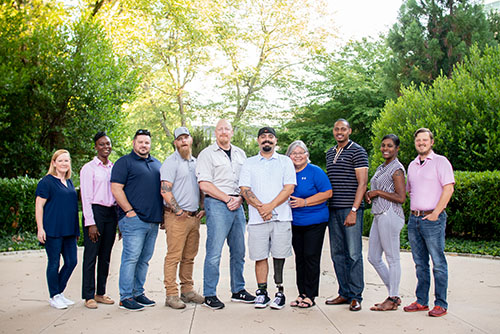
What started in 2003 as a grassroots effort to provide comfort items to injured service members returning from war has become a decades-long vision to foster the most successful, well-adjusted generation of wounded service members in our nation’s history. In the 20 years since Wounded Warrior Project® (WWP) began, programs and services have been added and evolved to meet the growing and changing needs of warriors and their families.
The needs of the post-9/11 veteran community are vast, and WWP™ is continuously working to meet these needs with an emphasis on mental health, physical health and wellness, financial readiness, connection, and advocacy.
WWP has served nearly 2 million veterans and their families as of the end of fiscal year 2023.
Here’s a look at the evolution of some life-changing programs and services WWP provides.
Warrior Care Network
This unique program began in 2015 to expedite healing for warriors with post-traumatic stress disorder (PTSD) and traumatic brain injury (TBI). Warrior Care Network is a partnership between WWP and four academic medical centers. The two-week program is tailored to provide individualized care to support each warrior’s healing journey.
In the years since its launch, Warrior Care Network has served more than 10,400 injured post-9/11 veterans and families.
In January 2024, WWP announced another $100 million investment in Warrior Care Network, bringing the total investment to $336 million.
WWP funding for the program also supports research in improving treatment for mental health and TBIs. This includes:
- Virtual reality.
- Repetitive transcranial magnetic stimulation.
- Artificial intelligence.
Warrior Care Network has continued to evolve in its commitment to innovation, leading to more customized treatment approaches. Warrior Care Network has made strides in capitalizing on PsyPact, which allows clinicians to provide needed treatment virtually across state lines. Warrior Care Network outcomes show not only clinically significant reductions in PTSD symptoms but also suicidal ideation.
“One of the unique strengths of Warrior Care Network is that it’s tailor-made for the individual it’s serving,” said Warrior Care Network Director Erin Fletcher, Psy.D. “While we know the symptoms of PTSD are very similar across the individuals who experience those symptoms, we also know what doesn’t work is a cookie-cutter approach to this care.”
Project Odyssey
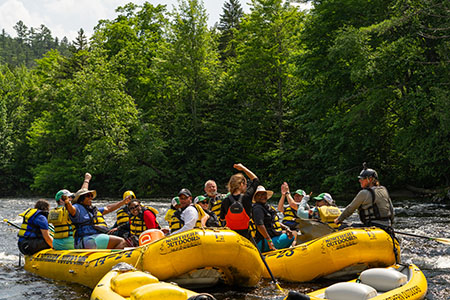
An early WWP program that began in 2007, Project Odyssey® uses adventure-based learning to help warriors manage and overcome their invisible wounds, enhance their resiliency skills, and live fulfilling, productive lives. Since its inception, the 12-week program has grown to include individuals, couples, and families.
Project Odyssey also includes a five-day mental health workshop designed to challenge warriors to step out of their comfort zone, learn techniques to deal with particular stressors and restore camaraderie with other veterans. Couples Project Odysseys helps partners improve communication and strengthen their relationships.
Some Project Odyssey workshops can include:
- Hiking.
- Rock climbing.
- Skiing.
- Rafting.
- Art activities.
All workshops include resilience-building, coping skills, goal-setting, and the opportunity to connect with other warriors and/or family support members.
“When I got to Project Odyssey, it was like coming out of a shell,” said wounded warrior and Army veteran Aaron Cornelius. “It’s because of Project Odyssey and everything they taught me that I feel like a freaking human again.”
Physical Health and Wellness
WWP’s Physical Health and Wellness program takes a unique approach to physical health by recognizing the intrinsic value of a mind-body connection. Improving physical health is a powerful tool that impacts longevity and quality of life.
The Physical Health and Wellness program uses coaching, goal-setting, and education on improved sleep hygiene, nutrition, and controlling risk factors for chronic disease in order to help warriors live healthier lives.
“We started to measure things like psychological well-being and depression reduction during [involvement] with the program, which were tremendously impacted,” said James Herrera, vice president of Physical Health & Wellness. “Chronic pain and sleep are two of the biggest focus areas for Physical Health & Wellness going forward. Our Warrior Survey* has identified those as some of the greatest warrior challenges.”
The program is also continuing to evolve as the needs of warriors change.
Our Physical Health and Wellness team is incredibly passionate about staying apprised of the current literature and research to better inform our programmatic innovation,” James said. “We must continue to evolve based on the ongoing and changing demands of our veterans.”
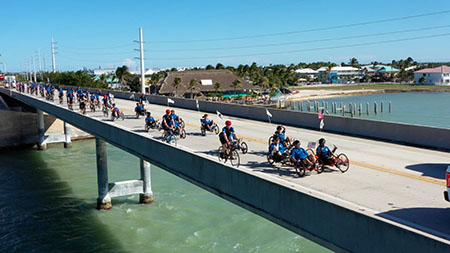
Soldier Ride
One of the most popular components of Physical Health & Wellness is WWP’s Soldier Ride®, a multi-day adaptive cycling event that builds confidence, improves skill, and fosters connection.
The first Soldier Ride kicked off in 2004 when a lone rider, Chris Carney, set out to ride his bike coast to coast to raise awareness for wounded veterans. In the 20 years since, Soldier Ride has evolved to include other adaptive sporting events and has offered veterans and their families more than 17,000 healing opportunities.
WWP Talk
Sometimes, injured veterans or their family members just want someone to talk to or to listen to them in a nonjudgemental, nonclinical environment. That’s where WWP Talk comes in. This telephonic goal-setting program, which began in 2013, connects warriors and family members with a WWP Talk partner to provide dedicated attention and an empathetic ear. Together, they set tangible goals and develop skills that lead to positive changes, like increased resilience, self-efficacy, quality of life, and improved psychological well-being.
In the decade since its inception, WWP Talk has served more than 17,000 warriors and family support members and has had more than 100,000 supportive listening calls.
Talk partners can assist participants with improving relationships and communication skills, identifying new coping skills, and connecting them with other WWP programs and external resources.
“No matter the adversity, WWP Talk is here for you on the other end of that phone call,” said WWP Talk director Sonal Patel. “We stand ready to serve and are committed to helping you improve your quality of life.”
Independence Program
WWP’s Independence Program helps our nation’s most severely injured veterans live life to the fullest potential and as independently as possible. It also provides critical support and assistance to their caregivers, so they know they don’t have to do it alone.

The Independence Program provides customized support opportunities to include:
- Connections to community support.
- Traditional therapies (physical, occupational, and speech).
- Alternative therapies like art, music, and equine.
- Community volunteer opportunities.
A warrior’s catastrophic injury or illness does not have to be service-connected either.
Independence Program serves warriors living with conditions like traumatic brain injury and spinal cord injuries, as well as multiple sclerosis, stroke, epilepsy, dementia, Parkinson’s disease, and brain tumors.
Through the years, the program has evolved to address greater needs and includes long-term planning services through our continuous care services program (CCS), which began in 2021. CCS consists of life-care planning, benefits analysis, legal planning, and financial planning for the warrior and caregiver.
“The Independence Program has provided me with the tools that I need to be able to say, “OK, I can set new goals, I can go back to school, I can get out and try new things,” said wounded warrior and Navy veteran Sharona Young, who was diagnosed with multiple sclerosis. “I really am enjoying what I’m learning through continuous care because it’s been an eye-opener for me to kind of start thinking about those long-term plans so if and when I get to the point where I need a higher level of care, I’ve already got everything in place.”
Financial Wellness
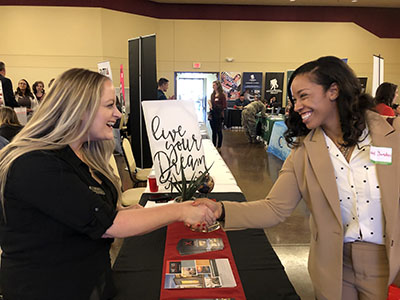
Economic struggles can lead to a whole slew of other issues, including depression, anxiety, and even suicidal thoughts. WWP’s Financial Wellness programs can help warriors take control of their finances, prepare for civilian jobs, and file for VA disability benefits.
- Financial Readiness: This program empowers warriors to build a strong foundation for themselves and their families. It conducts seminars and workshops to help with budgeting, debt management, and long-term planning and offers ongoing support throughout every step of the process.
“That support really helps them feel like they're not alone and that we can do this together,” said Deborah Olvera, Financial Readiness manager at WWP. “They have a plan, and they're doing something about it, and that takes a load off. When you have a plan, you can see the light at the end of the tunnel.”
- Warriors to Work: Launched in 2008, Warriors to Work helps veterans and their families prepare for meaningful career opportunities outside the military. The program provides coaching and tools such as career counseling, resume writing assistance, interview prep and training resources necessary to assist in transition to their civilian careers. It also works with companies to find the right fit for the warrior or family member and the employer, ensuring both short- and long-term financial wellness needs are satisfied.
Warriors to Work also works with other organizations to hold events and workshops designed to improve the chances of finding employment. It has evolved to meet changes in the economy, job market, and warrior’s needs.
“Our programming is very adept at responding to the needs of the warriors,” said Warriors to Wok Regional Director Kevin Rasch. “When the unemployment rate was high, we could be reactive and plug people into jobs. But when the unemployment rates are low, we need to be proactive and make sure warriors are in the right jobs.”
- Benefits Services: Filing for benefits from the Department of Veterans Affairs (VA) can seem daunting, especially if you’re already dealing with an injury or illness. WWP’s Benefits Services helps warriors navigate that process and get the benefits they’ve earned in a manner that honors their service.
WWP’s VA-accredited national service officers help submit disability claims, file appeals, and provide information on best practices and next steps, all at no cost. As warriors age, there are also the possibilities of service-related injuries or illnesses popping up or worsening. The Benefits Services team can help navigate those changes.
“Sometimes it's better to find somebody who can help you through the process, so you don't do it alone,” WWP’s National Benefits Service director Mike Stoddard said. “There are plenty of partners and advocates who are willing to help you.”
Complex Case Coordination
One of WWP’s newer programs, Complex Case Coordination (C3), serves warriors with complex challenges that require immediate attention, such as substance use, mental and physical health needs, and complicated situations like homelessness. The team serves as advocates to assist warriors with getting connected to resources and care to foster safety, security, and stability in all aspects of their lives.
The team works closely with VA, Department of Defense, and other external resources to ensure warriors get the specialized help they need and the best care available. The warrior and their families are also integral to the decision-making process, empowering them to get the help they need to transition back to everyday life.
“It is an urgent type of assistance for usually the first seven to 10 days,” said Complex Case Coordination director Matt Brady. “Once we get them into care, get them a little bit more stabilized, we can start getting them on the right pathway, back on their feet and moving forward. On the backside of that, we’ll start to wrap around all the other Wounded Warrior Project services that they may need or want.”
Livestreaming & Gaming
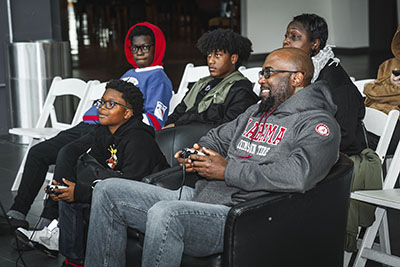
WWP’s livestreaming and gaming initiative recognizes the value and popularity of streaming and gaming, especially in the lives of veterans.
Through this initiative, warriors and community supporters tune in to watch livestreams focused on pop culture, 4eteran awareness, sports commentary, and a multitude of topics that span all demographics. WWP livestreaming followers can help fuel the WWP mission on an entertaining and engaging platform.
Part of the initiative is Stream to Serve, an online charity streaming program inviting content creators to stream what they love and support WWP’s life-changing programs and services.
“Veterans who participate in WWP's livestreaming and gaming activities find strength through community and an additional tool to cope with stress,” said Jackie Green, WWP’s livestream fundraising manager. “Many veterans are comfortable in this space, and their passion for streaming and gaming has created a low-barrier pathway to learn more about available support.”
The Mission Continues
Wounded Warrior Project has come a long way since its humble beginnings in 2003, but there is still work to do, and WWP is committed to fulfilling its mission to honor and empower wounded warriors.
With the commitment and support of dedicated donors, sponsors, and like-minded organizations, no warrior has to feel like they’re alone or forgotten. Together, we can ensure that warriors have every opportunity to thrive and live life on their terms, now and in the future.
Find out how you can help fuel WWP’s mission.
*Warrior Survey, Wave 2 (conducted June 15-Aug. 24, 2022)
Contact: — Paris Moulden, Public Relations, pmoulden@woundedwarriorproject.org, 904.570.7910
About Wounded Warrior Project
Since 2003, Wounded Warrior Project® (WWP) has been meeting the growing needs of warriors, their families, and caregivers — helping them achieve their highest ambition. Learn more.